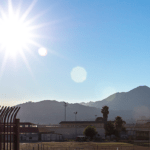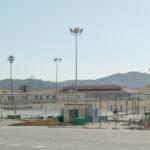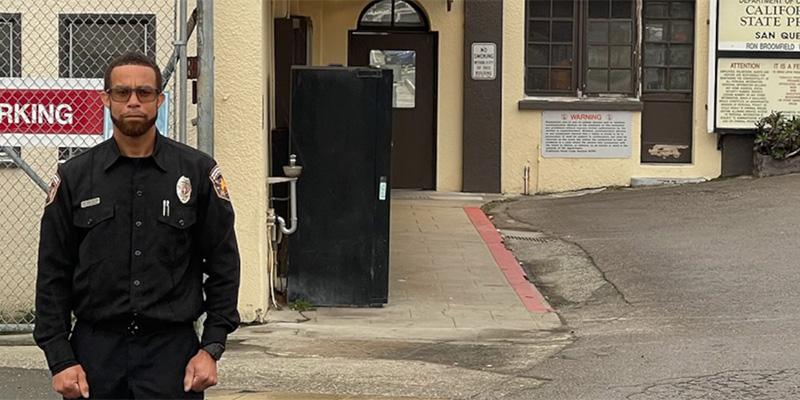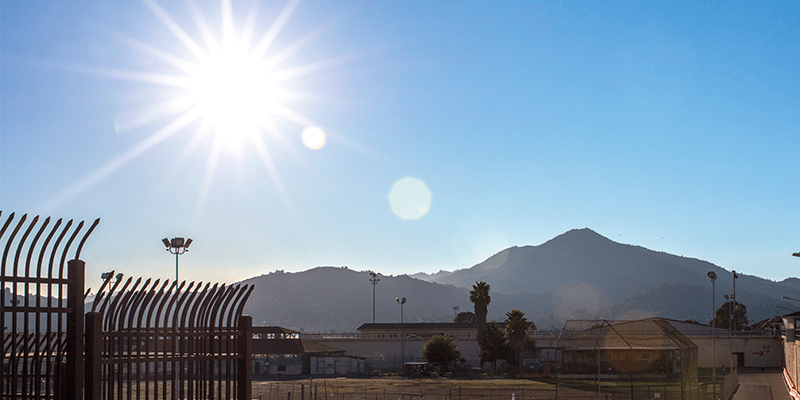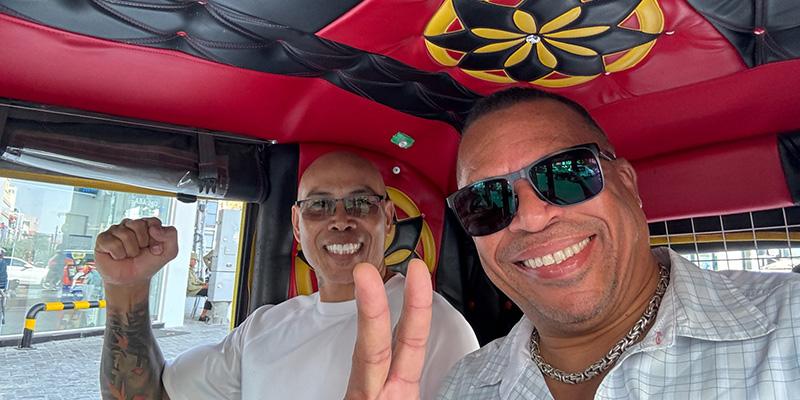Dear friends,
Given how much is changing rapidly at San Quentin, I’m writing to share another update, as well as some practical information. For anyone new to this list, it may be helpful to read this June 18th update and/or the previous ones for further background.
For those with loved ones inside: if/when you are able to be in contact with your person, we encourage you to make sure that the “next of kin” information they have on file is accurate and up-to-date. This way if they become ill, the prison or hospital will be able to release their medical information to you. The “Authorization for Release of Information” form is linked here in English and Spanish. You might consider printing this form out, filling in your information, and sending it to them to submit. Instructions for doing so can be found here under the Requesting Protected Health Information (PHI) tab. Contact information for the Medical Department of each California prison is here.
As of Wednesday, July 8th, 1,387 people incarcerated at San Quentin have been confirmed to be COVID-19 positive, out of a population of nearly 3,800. Over 50 people are currently being treated at outside hospitals. (Information about the number of current cases at all institutions can be found on the CDCR Population COVID Tracker page.) Testing at San Quentin continues, though of course test results simply reflect a given moment in time, as long as people remain at risk of exposure.
As elsewhere, not everyone who has tested positive at the prison has or will become seriously ill, or even symptomatic. Yet without regular programs, or visiting, and because phone calls are scarce and mail has slowed to a crawl, things have also become immensely stressful for everyone with any connection to people inside. Most information about the wellbeing of people at San Quentin arrives through word of mouth, from people who are in touch via regular phone calls, paper mail, contraband cell phones, or occasionally through social media. The fact that medical information is also private can make sharing it complex, even among friends and colleagues.
Regarding conditions inside: we are learning a great deal through some staff, as well as from letters we continue to receive from people who received our care packages at the end of April, including many who are not students. More recently we have also heard from many of the people who were transferred to San Quentin from the California Institution for Men just a few weeks ago, as part of the Department’s ill-fated attempt to protect them from the current outbreak there. Thanks to the support of San Quentin staff, we were also able to get packages to them. Some of their letters are here.
In short, conditions inside have become extremely bleak. San Quentin has always been one of the most dilapidated prisons in the system; and yet people have long fought to stay there, because of all the programs. But since March, all educational, recreational and self-help programs have been shut down. As more and more staff become ill and staffing levels drop precipitously, access to showers, yard, canteen, phones, laundry, mail, and other basic services have continued to deteriorate. The kitchen recently stopped functioning altogether due to multiple positive COVID-19 cases among staff, causing the prison to move to three noxious bagged meals a day, and creating further anger and tension throughout the prison. Meanwhile, the increasing number of prisoners now being treated at outside hospitals is also further depleting staffing as each person, no matter their condition, requires the presence of at least two correctional officers. Conditions in Reception, where many cells have no electricity and TVs and radios are not allowed, have been particularly horrific, as the combination of isolation, anxiety, and boredom increasingly frays people’s nerves and strains mental health. People with existing mental health challenges and other conditions or disabilities requiring extra support are now especially vulnerable, since most clinical programs and services have been drastically scaled back or discontinued.
Prison staff are also experiencing tremendous stress, as they seek to manage their own worries about becoming ill, while struggling to keep things running, and continue showing up for their colleagues. In some instances, entire cell blocks have been staffed by one or two officers. Staff who are now being drawn (often involuntarily) from other institutions to provide back-up are not only unfamiliar with San Quentin’s highly idiosyncratic operations and institutional culture, but are typically those with the least seniority, and thus experience. Some have only been correctional officers for a few days.
So far, over 170 San Quentin staff have contracted COVID-19. Within CDCR, staff can be “ordered over,” meaning required to work additional shifts, often back-to-back, with little or no notice. Lately many are working multiple doubles in a single week, leaving them increasingly stressed and exhausted. Many have been sleeping in their cars at the prison to avoid driving while extremely sleep deprived. Some have also moved out of their own homes out of fear of exposing their families to the virus. Staff stationed at hospitals are in some cases required to sit in the room with the COVID patient, typically for eight hours, with just a cloth mask. Some community members also do not consider people incarcerated at San Quentin part of the communities that the local hospitals exist to serve, although they are counted as Marin County residents. Instead, they fear that ill prisoners will, as they see it, deprive other ill community members of hospital space.
The cautiously “good news” is that a “unified command center” is now finally being created at San Quentin, to better coordinate efforts, reinforce staffing, and bring in additional skilled medical support and equipment. Tents have been set up on the Lower Yard, to provide more space and allow for increased physical distancing throughout the institution. From what we understand, people now housed in the gym will be moved into the tents, and a field hospital will be set up on grounds.
While we are hopeful that these long-overdue steps will improve conditions on the ground, the fact remains that San Quentin’s physical design and crowding will continue to make creating adequate space, much less quarantining or medically treating large numbers of people, nearly impossible. Roughly 500 people live in densely populated dormitories; most of the rest of the population lives two people in a cell. The only cells with actual doors (as opposed to bars) are the 89 cells in the Adjustment Center, which is one of the harshest segregation units in the state. When it was determined shortly after their arrival that some of the 127 elderly and medically fragile people from CIM were in fact COVID-positive, this is where they were placed—the AC. And yet even this failed to prevent the spread of the virus throughout the institution.
Most California prisons face similar problems, though in varying proportions and degrees. The two main risk factors are the nature of the housing (particularly dorms), and the number of people at the given institution who are older or have underlying medical conditions. Based on the most recent data available, over 10,000 people within CDCR are over the age of 60. San Quentin’s population is one of the oldest in the state, along with CIM and the California Health Care Facility in Stockton. The California Medical Facility in Vacaville is both a prison and a hospital. It provides both psychiatric and medical care to the most physically and psychologically vulnerable and elderly prisoners in the state; it also has a hospice unit—and all of this, in a mostly dorm-like setting. CMF just announced their first confirmed COVID-19 case last week.
As many of you are aware, it was the transfer of the group of people from CIM to San Quentin at the end of May that apparently unleashed San Quentin’s current COVID-19 outbreak. Clearly everything must be done now to prevent this from happening at other institutions—or at least to delay it as long as possible. Without a doubt, that transfer was ill-conceived, and disastrously executed: testing could have been done much closer to their departure; the actual transport could have been conducted much more safely; and the men could have been properly quarantined from the moment they arrived.
Yet the way that whole episode did go also reflected a breathtakingly simple and unsurprising reality: CDCR lacks the expertise, training, material resources, or facilities to protect the people in its custody from a pandemic. While medical care within the system has improved drastically over the last 13 years as a result of the appointment of a Medical Receiver, the system is nowhere close to being prepared to handle this crisis—and the Receiver’s Office has so far been unwilling or unable to muster the political will and resources required to compensate for this reality. The Governor has the authority to do so, but has so far been unwilling to risk the enormous political capital that it would require. At the same time, no one has been able to create a legal bridge between the Receiver’s court-ordered mandate to bring medical care within the system into compliance with Constitutional standards, and the dire need to radically change conditions (including population size) in order to prevent widespread illness and death as a result of the pandemic.
And thus here we are. The Department did not distribute masks to staff or prisoners, or even direct them to wear them, until the very end of April. To suggest that this recent episode at San Quentin was a matter of localized incompetence or leadership failure is to deny the reality that the system itself—not just the material reality of the prison, but the political dynamics by which it is held hostage—is, by their very design, a death trap. Instead, that whole episode merely reflected what happens when an extraordinary capacity for magical thinking converges with overwhelming political pressure, and desperation, to create safety where there is simply no safety to be found. In reality, the only way to prevent a massive loss of life remains evacuating thousands of people from the system now, while investing vast resources in supporting a healthy and safe reentry for those individuals, as well as protecting the health and safety of those who remain.
As far as I can tell, the people who know the system well and yet still maintain that it can, as it currently exists, navigate safely through this disaster, are either under great political pressure, or are simply too overwhelmed by the humanitarian and logistical implications to believe otherwise. Within CDCR, the relentless pressures of organizational culture, politics, and the will towards professional self-preservation prevent most from speaking their minds. Contrary to some public opinion, they also lack the political authority to take any action that would substantially change the situation; this power lies with the Governor. Yet fear of the political consequences of releasing thousands of low risk “lifers” whose commitment offenses are the only thing that renders their release “risky”—politically, not in any public safety sense—continues to forestall any serious action.
What we need right now is political leadership that 1) directly addresses the public’s misguided fear of anyone who has been convicted of a serious violent crime; 2) proactively seeks out real strategies for safely housing and supporting thousands of people as they return from prison; 3) establishes new standards for health and safety inside California prisons; and, above all 4) transforms the state’s sentencing laws. What we do not need are legislators, advocates, or members of the media who seek to craft sensationalistic scandals out of deeply entrenched systemic problems, or sidestep collective societal failures by, for example, calling for the heads of the leadership of San Quentin or CDCR. Things at San Quentin right now would be dramatically worse if we did not have the warden we have today.
One last thought I’d like to share: Many of the people at San Quentin who are at greatest risk from COVID-19 are people who were sentenced to death and have been incarcerated for many years, as their sentences are being appealed. Most of the men who have so far died at San Quentin have been condemned. We know their names, ironically, because it is CDCR policy to release them, unlike other incarcerated people: Richard Stitely, Dewayne Carey, Scott Erskine, Manuel Machado Alvarez, Joseph Cordova, and David Reed. As I read the first few newspaper articles on their deaths, which generally mention their often deeply disturbing commitment offenses in the first sentence, I began to dread what the public response is going to be—and what the public’s tolerance level is going to be for mass death within the prison system. Part of me thought, I hope people understand how atypical these offenses are, and then I thought, no—they are all fully human, and every single human being has a story. There must be space in this society for the humanity of every single person. The coming weeks and months will likely challenge us in unprecedented ways to respond to the question of why the lives of people in prison—including those who may have committed extreme violence—have value and meaning. I am so grateful for the community we have in all of you, and believe we are up to the task.
Warm regards,
Jody
Please note that the Prison University Project became Mount Tamalpais College in September 2020.


